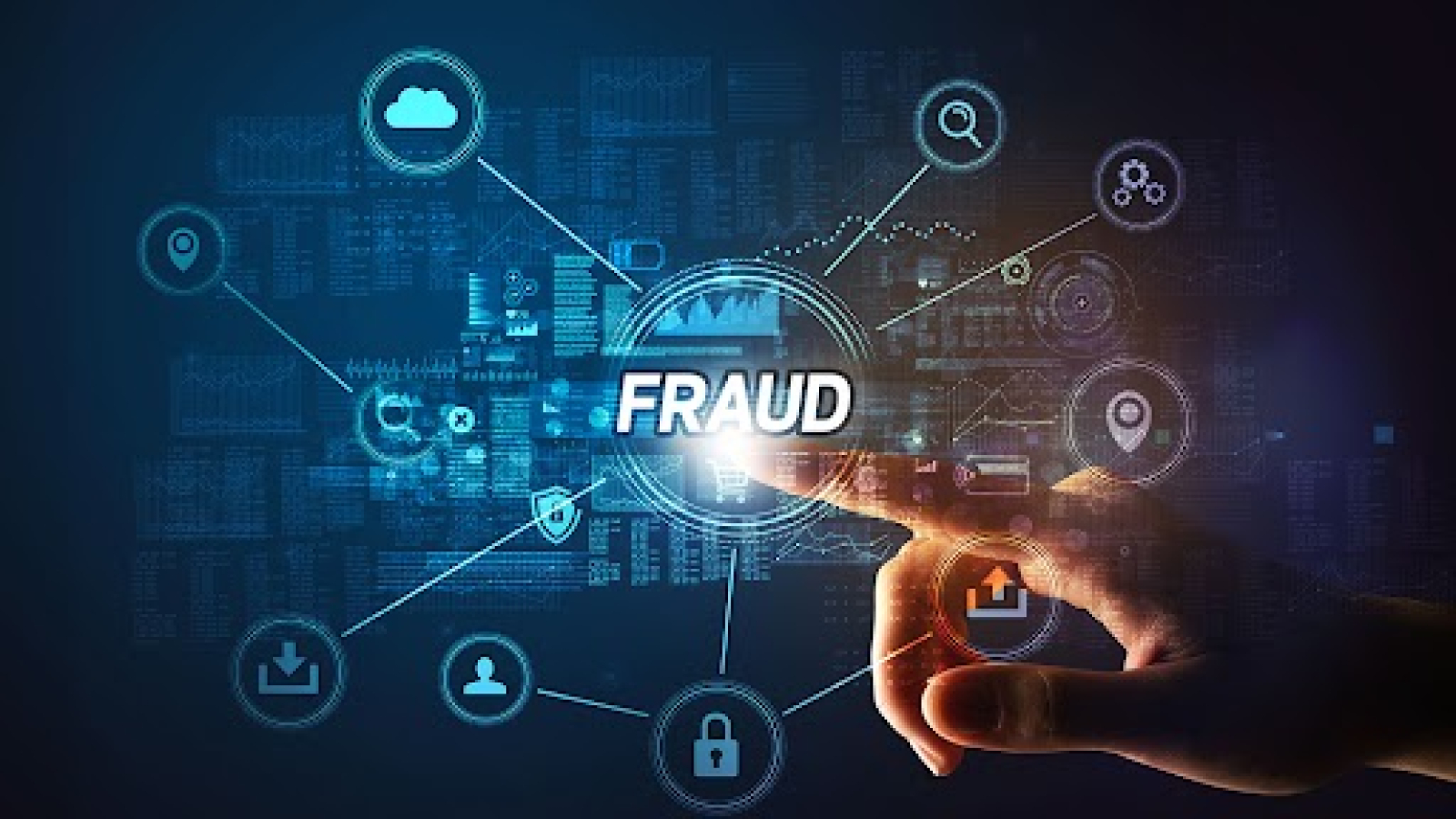
Money laundering involves concealing the origins of illegally obtained funds to make them appear legitimate. Fintech expert Sergey Kondratenko notes that money earned in such a way is conveniently funnelled through scam projects — shells that lure investors with attractive terms.
In a short time, fraudsters manage to pass through both their sums and others' money via a fake project. What other methods do fraudsters use, and how can such crimes be prevented?
Sergey Kondratenko: How Scam Projects are Used for Money Laundering
Money laundering remains a common problem globally. The total volume of this activity is difficult to assess accurately, but according to the UNODC, it accounts for 2% to 5% of global GDP, approximately amounting from $800 billion to $2 trillion.
The damage from scams involving money laundering is quite substantial. According to Sergey Kondratenko, this indicates that fraudsters have learned to carefully cover their financial schemes, often using scam projects.
Money laundering through scam projects is one method used by criminals to legitimise illegally obtained funds. This process usually includes several stages and uses complex schemes to make tracking the source of the money difficult. Here’s how it can work:
- Creation of a fictitious project: Criminals can create a fake investment project or company that appears legitimate at first glance. These could be projects in real estate, startups, investment funds, or even charitable organisations.
- Attracting investments: The scam project is marketed as a high-return opportunity to attract as much investment as possible from both, sophisticated and uninformed investors. Fraudsters may use aggressive marketing and advertising campaigns to increase the visibility and attractiveness of the project.
- Introduction of "dirty" money: At this stage, criminals invest illegally obtained funds into the project. Tracing the true source becomes more difficult since these funds are mixed with legitimate investments from other participants.
- Extraction and legalisation of funds: After the "dirty" money is invested in the project, criminals can extract it in the form of profits, loans, or expenses for the operational activities of the project. This helps "clean" the money since it is now associated with a legitimate business.
- Closure of the project: Once most of the funds are laundered, the scam project can be closed under various pretexts, such as lack of funding or market failures. This allows criminals to avoid suspicion and reduce the risks of exposure.
To combat such schemes, it is important to strengthen control measures and regulation of investment projects, as well as ensure heightened vigilance from investors and financial institutions.
"Overall, scam projects can use various methods and strategies for laundering money," states Sergey Kondratenko. "Its main goal is to hide the origin of illegal funds and legalise them through different channels. However, besides laundering money, they also cause harm to investors who incidentally get involved in the fraudulent scheme."
Sergey Kondratenko: The Impact of Scams on the Investment Market
According to data from the Federal Trade Commission (FTC), there was a rise in investment fraud in 2022. During that period, consumers lost $3.8 billion on investments in non-existent scam projects, more than double the losses of the previous period. According to Sergey Kondratenko, this trend is observed worldwide: fraudsters are perfecting their technologies and applying different techniques in practice.
The expert Sergey Kondratenko noted that fraudsters might pose as stock brokers, portfolio managers, or experienced investors, promising quick profits with minimal capital investment. To lend legitimacy to their activities, they might use professionally designed websites, documents, or applications. Sometimes, they even pay out the first dividends from investments to encourage you to invest even more.
Scams or fraud seriously undermine investor confidence in the investment market, leading to a number of negative consequences both for individual market participants and for the economy as a whole.
- Loss of trust in investment platforms: Frequent cases of fraud can lead to a general decline in trust in investment platforms and brokers. This increases the riskiness of investing and makes investors more sceptical about any investment offers.
- Reduction in investment volume: As a consequence of lost trust, investors may be less inclined to place their funds in investment projects, leading to a reduction in available capital for startups and other enterprises that genuinely need funding. Ultimately, this affects the reduction of economic activity.
- Increased regulatory control: In response to the rise in fraud, government bodies may tighten regulatory requirements, leading to increased costs for honest companies to comply with these standards. This could restrain innovation and reduce market competitiveness.
- Market volatility: Scams can cause short-term market shocks, especially if the fraud affects large sums or popular assets. This results in market unpredictability and increased volatility, making planning and forecasting difficult for investors.
- Changes in investor behaviour: Investors may begin to avoid risky investments, leading to reduced portfolio diversification and potentially lower overall investment returns.
- Losses for investors: The most immediate and obvious consequence of scams is financial losses for investors, which can affect not only their personal well-being but also the economic state of the country as a whole.
Thus, fraud has far-reaching effects on the investment market, undermining its stability and efficiency. Creating and maintaining a transparent, safe investment environment should be a priority for all stakeholders to minimise these negative effects.
Sergey Kondratenko: Effective Strategies for Preventing Financial Fraud
The key function in reducing financial fraud, combating scam projects, and money laundering should be performed by the regulator. First, there need to be unified tools and rules that make fraudulent actions impossible. Second, such rules and norms should not unduly burden honest, transparent business.
Sergey Kondratenko clarifies that regulators act through:
- Establishing strict norms and standards: Regulators set rules and standards that all market participants must follow. These rules include requirements for licensing, financial reporting, and transparency of operations.
- Supervision and monitoring: Regulators conduct regular checks and audits of institutions to ensure compliance with established standards. This includes monitoring transactions for suspicious activity that may indicate money laundering or financial machinations.
- Developing technological bases to combat fraud: Regulators often assist in the development and implementation of new technological solutions, such as blockchain and artificial intelligence, to improve the tracking of financial flows and the detection of illegal operations.
- International cooperation: Since many scam projects and money laundering schemes have a transnational character, regulators actively collaborate with international bodies to exchange information and coordinate actions to combat fraud.
- Education and public awareness: Regulators also play a key role in educating investors and the public about the risks associated with investments and ways to protect against fraud.
Including regulators in a comprehensive set of measures to prevent fraud and money laundering significantly strengthens the financial system, enhancing its resilience to illegal actions and protecting the interests of all honest market participants.
According to reports, about 33% of companies worldwide become victims of fraud to some extent.
The expert is convinced that the use of fraud prevention strategies directly by businesses to protect the company is also of significant importance:
- Creating a culture of transparency and ethics. It is important to instil in employees the significance of honesty and transparency in their work. This can include regular training, clear corporate standards of conduct, and open dialogue between management and staff.
- Implementing an internal control system. An effective internal control system can significantly reduce the risks of fraud. It should include separation of duties, regular audits and checks, and mechanisms for tracking and recording all financial transactions.
- Using modern technologies. Automating financial processes with reliable software helps reduce the human factor and prevent many types of fraud. Programs that offer real-time transaction monitoring and analysis features are particularly useful.
- Educating employees. Regular training of employees on the signs of financial fraud and methods of prevention is a key aspect of protection. Employees should know how to recognise suspicious activities and whom to contact for help.
- A policy of zero tolerance for fraud. A clear corporate policy that enforces zero tolerance for any form of fraud helps deter potential violators. It is important that all employees are aware of the consequences of fraudulent actions.
- Engaging external consultants. Regularly involving external auditors to check financial statements and internal processes independently can identify potential vulnerabilities and prevent fraud.
"Applying these strategies in practice will help create a safer and more stable financial environment at the enterprise, minimise the risks of financial fraud, and strengthen trust among employees and partners," concluded Sergey Kondratenko.
Image by Freepic
Disclaimer: This is sponsored content. The information on this page is not endorsed or supported by U.Today, and U.Today is not responsible or liable for any inaccuracies, poor quality, advertising, products or other materials found within the publication. Readers should do their own research before taking any actions related to the company. U.Today is not responsible, directly or indirectly, for any damage or loss caused or alleged to be caused by or in connection with the use of or reliance on any content, goods or services mentioned in the article.
 Vladislav Sopov
Vladislav Sopov Godfrey Benjamin
Godfrey Benjamin Gamza Khanzadaev
Gamza Khanzadaev Arman Shirinyan
Arman Shirinyan Tomiwabold Olajide
Tomiwabold Olajide